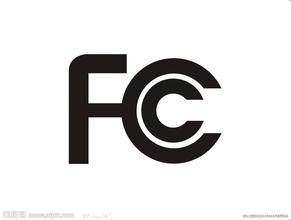American FCC Certification

FCC(Federal Communications Commission) was established by COMMUNICATIONACT in 1934 and is an independent agency of the U.S. government and is directly responsible to the National Assembly. The FCC coordinates domestic and international communications by controlling radio, television, telecommunications, satellites and cables. In order to ensure the safety of radio and wire communications products related to life and property in more than 50 states, Colombia, and the United States, the Office of Engineering and Technology is responsible for the technical support of the Commission and is also responsible for equipment recognition. Many radio applications, communications products, and digital products require FCC approval to enter the U.S. market. The FC committee investigates and studies the various stages of product safety to find the best way to solve the problem. At the same time, the FCC also includes radio devices, aircraft detection, and so on. According to the relevant part of the U.S. Federal Communications Regulations(CFR47 Part), all electronic products entering the United States require electromagnetic compatibility certification(except for some products specified in the relevant provisions), Among them, there are three common authentication methods: Cerfication, DoC, and Verification.
FCC Verification Self-certification
Such reports can be issued as long as they are approved by the FCC. The main products targeted include: AV products, cordless phones, ordinary household appliances, digital equipment other than PC and PC peripherals, and CASSA equipment. Certification cycle: one week
FCCDOC self-declaration
Only laboratories authorized by A2LA(American Laboratory Accreditation Association) or NVLAP(National Laboratory Accreditation System) can issue such reports and DOC declarations. The manufacturer can label the FCC logo on the product and sell it to the United States. Main products: IT products, PCs and PC peripherals.
Certification cycle: 1-2 weeks
FCC Authentication(FCC ID) Certification Certificate
Certification method: First, the product is sent directly to the United States TCB laboratory for completion, but this will be costly and difficult to control. Second, the product is sent to a laboratory approved by the FCC to test in the laboratory, prepare information, and complete the report. The laboratory then sends the test report to the TCB agency for certification. At present, customers mainly use this method.
Information preparation:
Applications for FCC Verification, FCC DOC manufacturers only need to provide samples, circuit diagrams, and series difference instructions(if any). Information required to apply for a FCCID:
1. Samples
2. Service application form,(NS format, completed and signed by applicant)
3. Letter of authorization(NS to provide format to be completed and signed by applicant):
Project and feature Capacity Leter
Certification Agent
FCC Capacity Leter
(Signed for Confidentiality) or Non-confidential Leter(Signed for Non-Confidentiality)
4. Technology(technical parameters), including the following:
A. Frequency: To indicate the frequency range, or detailed frequency points
B. Modulation: Working mode, such as: FM, HFSS, DSSS, UNPS, GSM, CDMA, etc.. If it is HFSS mode, write its principle
C. Antenna Specialization: Products with external antennas(such as walkie-talkies) need to give antenna parameters(Antenna Gain)
D. Outcut Power(actual outcut power is 5 % different from the customer's nominal permission, otherwise Fair)
5. Use Manual
Be careful with warnings.
6. Chemics(circuit diagram)
E. Route diagram: To indicate the parameters of the component, it must be marked with an antenna
F. Component Location Map
7. Lock Diagram(Box Figure)
Antenna, with frequency
8. Circuit Design(line description)
Describe the circuit diagram / principle in text.
9. Turn up method(frequency modulation method: explain how to turn the frequency to the corresponding frequency point)
Note: Low frequency wireless products do not need to provide this information
When it comes to sound products(such as microphones, walkie-talkies), input and outputpoints for LPF(Low Pass Filter)
All Lence products provide "bandwidth" parameters
Power FCC certification:
Communication power supply FCC certification, switch power supply FCC certification, charger FCC certification, display power supply FCC certification, LED power supply FCC certification, LCD power supply FCC certification, uninterrupted power supply FCC certification, etc..
Lamp FCC certification:
Chandelier FCC certification, rail lamp FCC certification, courtyard lamp FCC certification, lantern FCC certification, lamp FCC certification, lamp FCC certification, lamp FCC certification, lamp FCC certification, led light FCC certification, led light FCC certification, led bulb FCC certification, led bulb FCC certification, grid lamp FCC certification, FCC certification, Aquarium lamp FCC certification, street lamp FCC certification, LED lamp FCC certification, energy saving lamp FCC certification, T8 lamp FCC certification, etc..
Home Appliance FCC Certification
Fan FCC certification, electric kettle FCC certification, sound FCC certification, TV FCC certification, mouse FCC certification, wireless mouse FCC certification, vacuum cleaner FCC certification, etc..
Electronic FCC certification
FCC authentication, mobile phone FCC authentication, router FCC authentication, mobile phone battery FCC authentication, laser pen FCC authentication, vibration rod FCC authentication, etc..
Electronic FCC certification
Earphone FCC certification, mobile phone FCC certification, router FCC certification, mobile phone battery FCC certification, laser pen FCC certification, vibration rod FCC certification; Mechanical FCC certification of gasoline engine FCC certification, welding machine FCC certification, CNC drill machine FCC certification, tool grinder FCC certification, lawn mower FCC certification, washing equipment FCC certification, bulldozer FCC certification.

